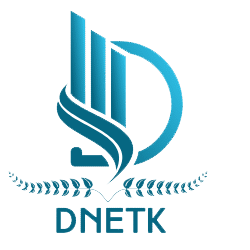Coffee is one of the most traded agricultural commodities in the world, and Barchart Coffee provides traders, investors, roasters, and enthusiasts with real-time data, charts, and analytics to monitor its performance. From coffee futures and spot prices to technical indicators, Barchart Coffee is a go-to tool for anyone looking to stay updated with the global coffee market.
In this article, we’ll explore:
- What Barchart Coffee is
- Why coffee futures are important
- Price calculations and forecasting
- Coffee market trends
- FAQs with useful answers
What is Barchart Coffee?
Barchart Coffee is a section of Barchart.com that focuses on live data, charts, and insights related to coffee futures contracts (KC). These contracts are traded on the Intercontinental Exchange (ICE) and represent 37,500 pounds of Arabica coffee beans per contract.
Barchart provides:
- Coffee Futures Quotes (real-time prices, historical data)
- Coffee Futures Charts (technical indicators, candlesticks, line charts)
- News & Market Analysis (supply-demand balance, weather impact, Brazil crop updates)
- Coffee ETFs & Stocks (companies dealing with coffee production, roasting, or trading)
Importance of Coffee Futures
Coffee futures are vital because they:
- Allow hedging for farmers and roasters.
- Provide speculation opportunities for traders.
- Show global supply-demand balance.
- Influence retail coffee prices worldwide.
For example, if coffee futures are rising due to a drought in Brazil, your local coffee shop may increase prices weeks later.
Barchart Coffee Price Calculation
Let’s understand coffee futures pricing with a calculation.
1 futures contract = 37,500 pounds of Arabica coffee.
If Barchart Coffee shows the price = $2.00 per pound, then: 37,500×2.00=75,000 USD37,500 \times 2.00 = 75,000 \, USD37,500×2.00=75,000USD
That means one coffee futures contract is worth $75,000.
Example Profit/Loss Calculation:
If you buy 1 contract at $2.00/lb and later sell at $2.10/lb: (2.10−2.00)×37,500=0.10×37,500=3,750 USD(2.10 – 2.00) \times 37,500 = 0.10 \times 37,500 = 3,750 \, USD(2.10−2.00)×37,500=0.10×37,500=3,750USD
So, $3,750 profit is made.
If prices drop to $1.95/lb instead: (1.95−2.00)×37,500=−0.05×37,500=−1,875 USD(1.95 – 2.00) \times 37,500 = -0.05 \times 37,500 = -1,875 \, USD(1.95−2.00)×37,500=−0.05×37,500=−1,875USD
So, a $1,875 loss occurs.
Coffee Market Trends on Barchart
Barchart Coffee helps traders analyze short-term and long-term coffee trends.
Factors influencing coffee prices:
- Weather in Brazil, Vietnam, and Colombia (main producers).
- Currency fluctuations (Brazilian Real vs. US Dollar).
- Global demand (rising consumption in Asia).
- Logistics and shipping costs.
- Speculative trading volume.
Technical Indicators in Barchart Coffee
Traders use technical analysis tools provided by Barchart Coffee, such as:
- Moving Averages (MA) – to see trend direction.
- Relative Strength Index (RSI) – to check if coffee is overbought/oversold.
- MACD (Moving Average Convergence Divergence) – to track momentum.
- Fibonacci Retracements – to find support and resistance levels.
Barchart Coffee and Global Consumption
- World consumption: 10.5 million tons annually.
- Top consumers: USA, Europe, Japan.
- Specialty coffee growth: Over 8% annually.
- ETFs: Some coffee-focused ETFs track futures, influenced by Barchart Coffee data.
FAQs
Q1: What is Barchart Coffee used for?
A1: It is used to track live coffee prices, futures, and market analysis for trading, investing, and hedging.
Q2: How much is one coffee futures contract worth?
A2: One contract = 37,500 lbs of Arabica coffee. Multiply by the price per pound shown on Barchart Coffee. Example: $2.00/lb = $75,000 contract value.
Q3: Is coffee a good investment?
A3: Coffee can be volatile due to weather and supply risks, but it’s a popular commodity for diversification.
Q4: Where can I see live coffee prices?
A4: On Barchart.com Coffee Futures page, you can track live KC contracts.
Q5: Can retail investors trade coffee futures?
A5: Yes, but usually through brokers or ETFs. Futures trading requires margin accounts.
Q6: What is the ticker symbol for coffee futures?
A6: Coffee futures trade under the ticker KC on ICE.
Q7: Does Barchart Coffee only show Arabica coffee?
A7: Primarily Arabica, but some sections also track Robusta and related indexes.
Q8: How do weather events affect coffee prices?
A8: Droughts, frost, or heavy rains in Brazil and Vietnam cause massive swings, all reflected in Barchart Coffee charts.
Final Thoughts
Barchart Coffee is more than just a price tracker—it’s a comprehensive tool for analyzing coffee futures, prices, and technical indicators. With its data, traders can calculate contract values, profits, losses, and trend forecasts.

